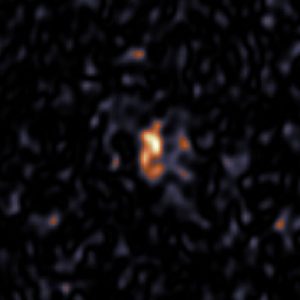
Submillimetre image of the heart of Supernova 1987A. Image credit: ESO/ALMA/Phil Cigan (Cardiff University)
This month saw the announcement of two follow-up discoveries of two explosive events. Firstly observations of one of the highest energy gamma ray burst ever seen, detected back in January, have identified where it originated. Meanwhile, colleagues in Cardiff University have been searching for signs of a remnant neutron star at the heart of Supernova 1987A (which was observed to explode back in 1987) – and they may have found crucial evidence!
Closer to home, there are more signs of water vapour plumes erupting from Europa, and evidence that Hygeia, one of the largest objects in the asteroid belt, could be eligible to be characterised as a dwarf planet.
Over recent months, there has been excitement about Comet Borisov, a comet which originated in another Solar System. Prof Alan Fitzsimmons, from Queens University Belfast, is one of a number of astronomers from all around the world studying this interstellar visitor. We also discuss the impact on asteroid and comet searches of the recent launches of large groups, or “constellations” of satellites by groups such as SpaceX.
An extended edition of an original broadcast on 28th November 2019 as part of Pythagoras’ Trousers on Radio Cardiff.





